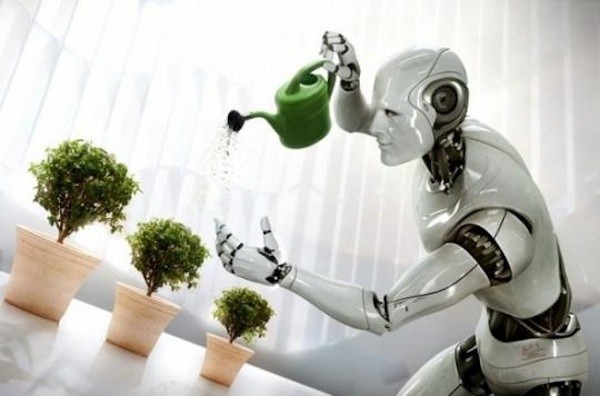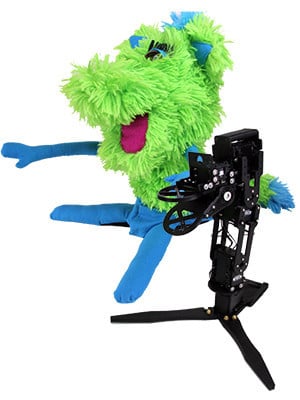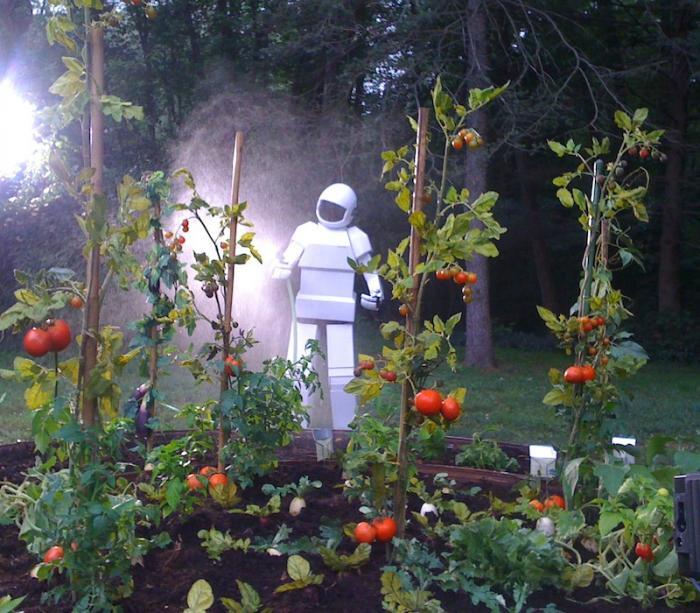RobotLAB Blog
Everything You Need To Know About Robotics in Businesses
Robot Abuse, Or What Goes Around Comes Around
The scene, a gritty street in downtown Philadelphia, Pa. The victim, Hitchbot, a world-famous robot fresh from hitch-hiking trips around Europe and across Canada. Waiting patiently for a ride to San Francisco, Hitchbot was suddenly viciously attacked and decapitated by an unknown assailant.

- 0 Comments
- Nov 2, 2015 10:30:00 AM
- Posted by Mike Nardine
- Topics:
Grandpa needs a pepper robot!
Hey! Why not?
Some grandfathers have everything they need: a full-featured, available, caring network of spouse, kids, grandkids and pets to look after them and be looked after; some,unfortunately,don't.
And yes, grandmothers as well as grandfathers are included in this discussion(No sexism tolerated on this blog; although we walk on the grey line past the censors from Time to time).
Sure, the fact that they are grandparents means a network once existed; but it's no secret in this world of ours that these networks don't always function very well. Even grandparents--old but still human--get divorced; kids move to the other side of the country; grandchildren,if their grandparents are lucky, go with their parents. Dogs and cats are the next best thing to family, but they, like every carbon being, die. And all too often the old are forced by circumstances beyond their control to live where pets are unwelcome. So, family out of town? No pets allowed? It's time to think about getting a robot!

- 0 Comments
- Oct 18, 2015 11:32:34 PM
- Posted by Mike Nardine
- Topics: Pepper, Assisted Living
How Much Is That Pepper Robot In The Window?
How much is that doggie in the window?
The one with the waggly tail
How much is that doggie in the window?
I do hope that doggie's for sale
Drooling over images of Aldebaran's Pepper robot now being sold in Japan and hoping I’ll have saved enough to get one by the time it arrives in the United States next year, I found myself humming an ancient ditty I haven’t heard for a very long time: How Much Is That Doggie In The Window? And why that particular song, you might ask? Well, it kinda fits! Read on!
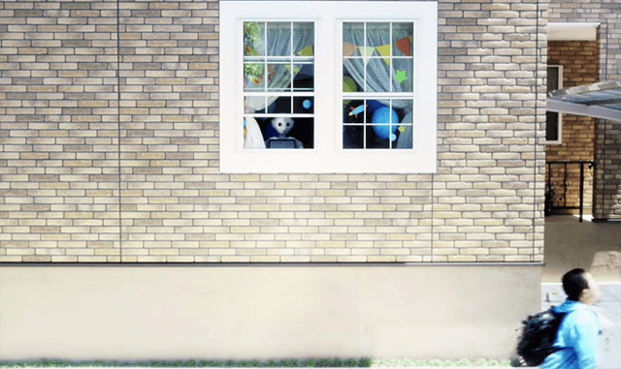
- 0 Comments
- Oct 16, 2015 12:29:32 AM
- Posted by Mike Nardine
- Topics: Pepper
There is Something About Pepper The robot
Yup, there's something about Pepper! No, she isn't Mary, I mean Cameron Diaz...but she is a fox! Well, anyway she's kinda foxy in a robot sort of way. I mean, how else can you describe 120 centimeters of curvy white plastic topped with the gorgeous, big, black, full eyes like Astro Boy gliding like a dream through your life with no aim but your happiness?
- 0 Comments
- Sep 24, 2015 8:25:45 PM
- Posted by Mike Nardine
- Topics:
Drones have replaced Johnny Appleseed!
Stephen Hawking, Bill Gates and Elon Musk worry that artificial intelligence (AI) might spell the end for mankind as the dominant being on this planet. Maybe, if environmental collapse doesn’t get to us first...and then just maybe AI might save us.
And so I thank the earth,
For giving me the things I need:
The sun and the rain and the apple seed;
The earth is good to me.
John Chapman (September 26, 1774 – March 18, 1845), often called Johnny Appleseed, was an American pioneer nurseryman who introduced apple trees to large parts of Pennsylvania, Ohio, Indiana, and Illinois, as well as the northern counties of present day West Virginia. He became an American legend while still alive, due to his kind, generous ways, his leadership in conservation, and the symbolic importance he attributed to apples.
The rhyme is part of a song sung by Dennis Day in a Walt Disney production of the Johnny Appleseed Story, circa 1948. The prose is from an Internet article on the Wikipedia, circa about now. While Disney used a good bit of poetic licence telling the story, there was such a man as Johnny Appleseed and if you’re interested you can find his grave behind a rusting metal fence at the edge of a park in Fort Wayne, Indiana; at least you could have 30 years ago. We can only hope it wasn’t bulldozed under for more parking; the earth might have been good to us but lately we haven’t been all that good to the earth and we are sadly lacking committed conservationists like John Chapman.
Every year humans cut down between three and six billion trees; that’s “billions,” not millions. In the United States alone we take down nearly a billion. And that’s not including those lost to fires and other acts of nature. In mankinds’ defense, we do try to plant more than we cut down: more than a billion and a half here in the States. Problem is, replanting is neither as profitable or as fun as chopping them down and a lot of seed and seedlings go to waste. Keeping up with the cutting down means some trouble must be taken to insure they take root; simply broadcasting seed with a wave of the hand might suffice for a lawn, but not for trees. Johnny Appleseed was certainly aware of this, and apparently took pains that the trees he planted survived.
Since Johnny Appleseed is a long-time dead and the carbon based organisms that have replaced him seem determined to denude the planet of trees (and themselves of oxygen), it is comforting to know that their silicon-based creations (robots) are about to step in and remedy this unbalance. Johnny Appleseed’s dream is about to be undertaken by some even more tireless beings.
Word of these particular robots comes out of the U.K. where a company called BioCarbon Engineering has developed a plan to use drones to plant trees. These drones consult “high resolution 3d maps” of the intended reforestation area before buzzing out and performing what BioCarbon Engineering describes as “precision planting activities” including shooting pre-germinated seed pods “encapsulated in a nutrient-rich hydrogel” into the soil with pressurized air. Later the drones will assess the results and take such actions as might be needed to improve them. The developer claims their process will save up to 85% of the cost and still plant vastly more trees than any comparable human-reliant system.
Lately science Titans like Stephen Hawking, Elon Musk, and Bill Gates have been predicting doom for mankind if he continues on his present course to artificial intelligence. AI is certainly one of a number of possible avenues to armageddon, but environmental collapse appears likely to arrive first. Intelligent robots may be our only salvation...Johnny would understand.
- 0 Comments
- May 1, 2015 1:47:00 PM
- Posted by Mike Nardine
- Topics:
- Posted by Mike Nardine
- Topics:
tech defines new normal in education
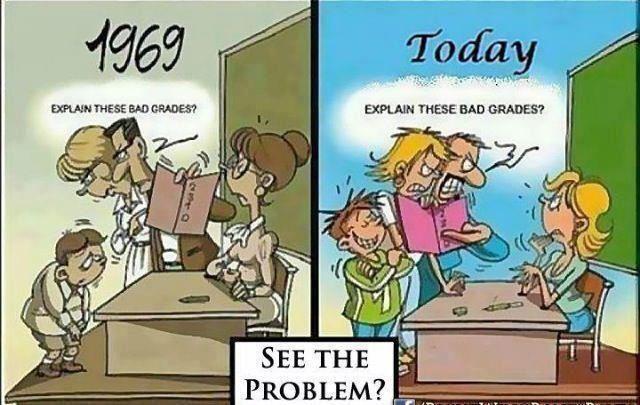
It is good to realize that, as this infographic says, that today’s college students have more options than their 1980’s counterparts had but their time is also stretched more thinly across the school day.”
Indeed, computers, smartphones, online courses and a host of other digital gadgets as well as the Internet itself have made it possible for the education industry to welcome committed students who must provide for their families as well as work on their futures. And the addition of more women and many more minority students in the classroom--both brick and mortar as well as virtual--can only be seen as a positive.
But still, it is no wonder President Obama has called for a national effort to secure the first two years of community college for free. A look at this infographic titled Technology Defines Much of Higher Education’s New Normal will tell you that higher education’s “new normal” is darned expensive. Almost eight times more expensive! Even adjusting for inflation, that increase still seems out of bounds. It also seems particularly anomalous that the price of school books has increased by almost ten times--this in the age of the tablet and online courses. But according to other sources it’s apparently going to get worse before it gets better. Which in turn increases the importance that today’s students gain the skills in school they will need to get the jobs they are going to need to pay off their student debt.
And as this infographic further points out, those jobs increasingly are in the STEM field. Instead of the old standby careers that were still with us in the 1980’s, construction, manufacturing and the service industries, almost 75% of present job openings out of college are in high-tech related industries like computer design, engineering, and one more not mentioned in the infographic, robotics.
- 0 Comments
- Jan 13, 2015 9:12:00 PM
- Posted by Mike Nardine
- Topics:
Denver Public Schools Need The RobotsLAB BOX

The Common Core Standards in education are getting more than their share of bad press. Teachers complain of a lack of materials and training while parents are upset because they don’t understand the new methodologies and can’t help their kids with math homework. We here at RobotsLab think we have at least some of the answers teachers and parents are looking for.
The problems facing the Denver, Colorado, public schools are a case in point. Next year, four years after the state adopted the standards, Colorado students will be subjected for the first time to standardized tests based on the Common Core standards. And yet teachers and administrators feel that the materials they have been using are not up to the task. That leaves them facing a situation where their competency will be questioned because students will be thrown by this new Common Core emphasis suddenly appearing in the tests.
According to some educators, that is partly because some educational publishers seem to think all they have to do is retitle their books to meet the new standards. Alyssa Whitehead-Bust, the district’s chief academic and innovation officer says this: those companies… “ haven’t redone their material. We’re looking for materials that are really redesigned, not just realigned.”
One student demographic is particularly endangered by this lack of adequate materials, English learners. Students for whom English is not their mother-tongue in Colorado now make up 35% of the student body. That means that even while teachers are trying to increase their students ability to function in an English language environment, they are also attempting to teach them subjects like math. And math, as taught in the Common Core, requires an emphasis on informational text, in English primarily. District chief schools officer Susana Cordova, notes that even those materials that have been redesigned, like material for English learners learning the language, don’t necessarily help with understanding that informational text. She says most of the redesigned lesson plans she has seen for English learners put too much emphasis on idiom and “That’s not the bulk of what English learners need to learn.”
While the robots at RobotsLab can’t solve the whole problem, teachers will find them helpful in teaching math to English learners. Our RobotsLAB BOX, for example, depends less on a student’s language than on his engagement in the lesson plan--and engaging students in lesson plans is our forte. Watching the robots that come with the BOX demonstrating math principles on the included tablet as complicated as Quadratic equations doesn’t require English, just their undivided attention; something robots do better than any lecture, book or blackboard.
- 0 Comments
- Jan 12, 2015 4:50:01 PM
- Posted by Mike Nardine
- Topics:
Cool Teacher Introduces Cool 3D Printer Tech To School
RobotsLAB salutes Shaun Cornwall, a SciTech teacher at Clark Elementary School in Issaquah, WA, whose courage and committment to his profession is only matched by his creativity! Tired of using the school’s 3d printers making nothing but boring knick knacks, he printed a Christmas gift for his students that they can use--and abuse! A kids dream and a teacher’s nightmare.When I was a kid in elementary school the only computers available wouldn’t have fit in our classroom and a printer was someone who probably worked at the local newspaper (remember those?). The only 3D technology we knew anything about came in cereal boxes, two-tone, paper and cellophane 3D eye wear that brought to life characters on the back of that cereal box. What we had in abundance, however, was spit wads and the means to launch them, rubber bands and straws. I preferred rubber bands myself as straws became waterlogged and unhygienic after only a few wet shots on goal--other students. Teachers used to wait at the door after lunch confiscating any rubber bands and straws they might see.
I am sure a lot has changed in the last half-century, but I’d be willing to bet that a middle-schoolers’ proclivity for tormenting their fellow students with spit wads is not one of those. Nor, I wager, has the average teacher’s desire to keep their classroom free of such attention-shattering activity.
But then, Shaun Cornwall is not the average teacher. He was convinced that the useless knickknacks most teachers made with the school’s 3D printers were not fully conveying the importance of this new technology to his students. He decided to build something that they could and would use and give it to them as a Christmas present. He went to Thingiverse and found just the 3d template he was looking for, a desktop catapult.
A what? That’s right, a catapult. A device described by the developer, Microsoft, as A small desktop catapult to launch projectiles at friends or coworkers. Wha..!“ launch projectiles...at friends..!” My first thought was what teacher in his right mind would deliver a projectile launcher into the hands of a bunch of teenagers?
But then I got to thinking and I realized that what Shaun Cornwall had done was sheer genius! Sheer genius at a future cost to himself in frustration and exasperation, but genius nonetheless! Because he was right about the problem he set out to solve: at present most schools present 3D printers to their students as little more than elaborate cookie-cutters for decorative objects: knickknacks. When in fact, 3D printing is considered by many, including President Obama, as the future of manufacturing--and I can’t imagine a better way of presenting that to kids than the way it was done by Shaun Cornwall with his gift of 50 desktop catapults.
We wish more teachers would take the risks that Shaun Cornwall did. Some of his colleagues will probably complain from time to time when those catapults show up in their classes but the kids will always remember a cool teacher that built something new with some cool new technology.
- 0 Comments
- Jan 8, 2015 8:22:25 PM
- Posted by Mike Nardine
- Topics:
Robots and Gardens as Math Instructors
What do gardens and robots have in common? Waiting…. Give up? They both make great math instructors!
Whether digging a garden or interacting with robots, students find themselves engaged (emphasis on this word “engaged”) in an activity that takes abstract math, a subject once found only on school blackboards or books, and puts it to work in a concrete and meaningful way.
Take for example the garden cultivated by teacher Nancy Rhodes’ fifth-grade kids in Corte Madera School in Portola Valley, California. For the last two years the kids have been laboring (“laboring” is likely too harsh a word) in what Ms. Rhodes calls “A Symbiotic Garden: Designed for a purpose.” Her first project aim was to have her students struggle with the question, “Can animals live without plants and can plants live without animals.” The students were required to design plant beds with the goal of attracting different animals. Again, some extra emphasis on the word “design” in the preceding sentence...
After all, as any gardener worth their salt knows, designing a garden plot requires more than grabbing a handful of seeds and throwing them on the ground. Every garden has a limited amount of room and the plants themselves differ in the space needed for healthy roots and sunlight. Some need shelters. Some need deeper soil than others. Water requirements differ with every species. No, it isn’t rocket science but any fifth-grader that has worked through a problem like the following is going to feel pretty good about themselves: The edge of a circular flower bed, 220 ft in diameter, needs mulch. How many cubic yards (yd3) of mulch do you need if you want the mulch to cover 3 ft in from the edge to a depth of 2.5 inches, all the way around?
Diameter = 220 ft
radius = 110 ft.
pi = 3.142
Area of a circle = pi x r2
Area of total bed = 3.142 x (110)2 = 38018.2 ft2
Area of inside bed = 3.142 x (110-3)2 = 35972.8 ft2
Area of ring needing mulch = 38018.2 - 35972.8 = 2045.4 ft2
Volume of ring (2.5 inches deep = 0.208 ft) = 2045.4 x 0.208 = 425.4 ft3
Convert cubic feet to cubic yards à 1 yd3 = 27 ft3 so 1 ft3 = 0.037 yd3
425.4 x 0.037 = 15.7 yd3 = 16 yd3
OR
1 yd3 = 325 ft2 to 1" deep
325 ft2 2045 ft2
1 yd3 = x
325x = 2045 x = 6.29 6.29 x 2.5" = 15.75 yd3 = 16 yd3
From: Dr. Leonard Perry, Univ. Vermont : Garden Math Sample Problems and Calculations
A garden then is certainly one great way to answer the question asked by nearly every student, “What do I need this math for?”
Here at RobotsLAB we don’t dig gardens, but we do develop robots that engage and instruct students in a manner that makes math interesting and concrete. Kids love robots. At least as much as they love gardening. And the big gain here for teachers is they don’t have to strain their backs, get sunburned, or dirty their hands while working on their lesson plan.
- 0 Comments
- Jan 7, 2015 4:59:14 PM
- Posted by Mike Nardine
- Topics:
Relevant Posts
- Augmented Reality: A Tool for Teaching Students Robot Programming
- Fostering Innovation Through Youth Education in STEM and EdTech
- How Parents Can Foster STEM Learning Beyond the Classroom
- How Robotics Cultivates a Deep Understanding of Mathematics in Students
- RobotLAB Receives EDTech Chronicle 2023 ‘BESTIE’ Award for Landmark Partnership with American Samoa Dept. of Education.
Subscribe to Email Updates
-
I Want To Learn MoreADDITIONAL INFORMATION

